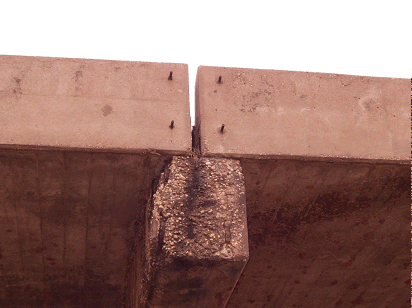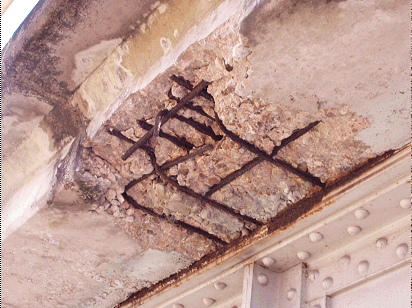Section 3: Bridge Joints
Anchor: #i1000374Risks of Chemical Damage
Joints are positions in the deck which allow thermal contraction and expansion to occur. If joints are not maintained then runoff will fall through joints. Typically, snow melt runoff is concentrated on the low side of the structure. Snow melt is particularly brutal because it is laced with chemical agents concentrated in one area and flows for extended periods of time (length of meltdown). This combination of concentrated flow combined with corrosive agents subjected to extended exposure allows for corrosion damage to initiate and progress.
Anchor: #i1000385Bridge Joint Inspection and Cleaning
TxDOT prefers bridge joint inspection and cleaning to be performed in the spring and re-inspection to occur prior to the beginning of snow season. This fulfills the annual bridge inspection criteria in accordance with the Maintenance Operations Manual
Figure 5-3. Poorly maintained joint allowed concentrated de-icer solution to damage cap.
Figure 5-4. Poorly maintained joint allowed de-icer solution to damage overhang to second mat of steel and top plate steel on beam.

